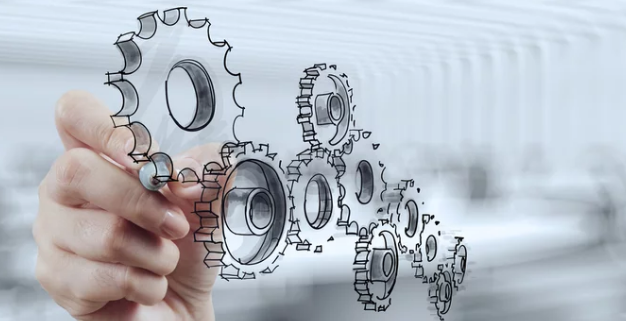The race to create safe, efficient, and sustainable nuclear power is accelerating—and at the center of this revolution lies one of the most promising technologies: the Molten Salt Reactor (MSR). Unlike traditional nuclear reactors that rely on solid fuel rods and water cooling, MSRs use liquid fuel dissolved in molten salt, offering remarkable improvements in safety, efficiency, and waste reduction.
This article explores how Molten Salt Reactors are engineered, their benefits, challenges, and their potential role in shaping the future of nuclear fission.
What Are Molten Salt Reactors?
A Molten Salt Reactor is a type of nuclear fission system where the fuel—usually uranium or thorium—is dissolved in a molten fluoride or chloride salt mixture. Instead of relying on pressurized water as a coolant, the reactor uses the molten salt itself to transfer heat.
Operating at high temperatures but low pressures, MSRs are considered inherently safer and more flexible than conventional reactors. Their unique design also allows for continuous fuel circulation, making them efficient and easier to manage compared to traditional solid-fuel systems.
How Molten Salt Reactors Work
The engineering principles behind MSRs are both elegant and revolutionary.
- Fuel Dissolution: Nuclear fuel is dissolved into molten salt, forming a liquid mixture that circulates through the reactor core.
- Heat Generation: As fission occurs, the molten salt heats up to temperatures as high as 700–800°C.
- Heat Transfer: The hot salt flows through a heat exchanger, transferring energy to a secondary salt loop or gas turbine.
- Electricity Production: The extracted heat is used to drive turbines, producing electricity with high efficiency.
- Continuous Refueling: Unlike solid-fuel reactors that require shutdown for refueling, MSRs can be refueled while operating.
The Advantages of Molten Salt Reactors
The potential of MSRs lies in their many advantages over traditional nuclear reactors:
1. Enhanced Safety
- Low Pressure Operation: Since MSRs don’t rely on pressurized water, the risk of catastrophic explosions is minimized.
- Self-Regulating Design: If the reactor overheats, the fuel naturally expands, slowing down the fission reaction.
- Freeze Plug Mechanism: In emergencies, a frozen salt plug melts and drains the fuel into safe storage tanks, halting reactions instantly.
2. Higher Efficiency
MSRs operate at much higher temperatures than conventional reactors, allowing them to achieve greater thermal efficiency when converting heat to electricity.
3. Reduced Nuclear Waste
They generate less long-lived radioactive waste, and some designs can even consume existing nuclear waste as fuel.
4. Fuel Flexibility
MSRs can use different fuels, including thorium, which is abundant and offers the potential for cleaner nuclear cycles.
5. Cost-Effectiveness
The simplicity of design—no need for massive pressurized containment vessels—can reduce construction and maintenance costs over time.
The Thorium Connection
One of the most exciting aspects of MSRs is their compatibility with thorium fuel cycles. Thorium is three times more abundant than uranium and produces significantly less transuranic waste.
In a molten salt thorium reactor, thorium-232 absorbs a neutron to become uranium-233, which then undergoes fission. This cycle promises a nearly inexhaustible supply of clean energy with reduced environmental impact.
Applications of Molten Salt Reactors
The versatility of MSRs allows for a wide range of applications beyond traditional power generation:
- Electric Grid Supply: Providing consistent, base-load power to national grids.
- Industrial Heat Production: Supplying high-temperature heat for chemical processing, hydrogen production, and desalination.
- Nuclear Waste Recycling: Some MSRs are designed to consume spent nuclear fuel, reducing waste stockpiles.
- Space Exploration: Future concepts envision MSRs powering off-world colonies on the Moon or Mars, thanks to their high efficiency and compact designs.
Engineering Challenges of Molten Salt Reactors
While MSRs are promising, several technical and regulatory challenges must be overcome before widespread adoption:
1. Material Durability
Molten salts are highly corrosive at high temperatures. Engineers are developing advanced alloys and coatings to withstand long-term operation.
2. Regulatory Uncertainty
Most nuclear regulations were written with traditional water-cooled reactors in mind. Updating policies for MSRs is a slow but necessary process.
3. Fuel Production and Supply
Producing HALEU (High-Assay Low-Enriched Uranium) or processing thorium for MSRs requires significant infrastructure investment.
4. Public Perception
Nuclear energy still faces skepticism due to historical accidents. Gaining public trust is crucial for MSR adoption.
Global Efforts Toward MSR Development
Nations and private companies around the world are investing heavily in molten salt reactor research:
- China: Operating the TMSR-LF1 experimental reactor in the Gobi Desert, marking a major step in thorium MSR development.
- United States: Companies like Terrestrial Energy and Kairos Power are leading MSR projects.
- Europe: Research collaborations are ongoing under the SAMOFAR (Safety Assessment of Molten Salt Fast Reactor) program.
- India: Actively researching thorium-based MSRs to utilize its vast thorium reserves.
The Future of Molten Salt Reactors
As the world searches for cleaner, safer, and more sustainable energy sources, molten salt reactors may play a transformative role in the nuclear energy landscape. With their inherent safety features, fuel flexibility, and ability to recycle waste, MSRs stand as a powerful bridge between today’s energy challenges and tomorrow’s low-carbon future.
The coming decades may see MSRs not only powering cities and industries but also driving new innovations in hydrogen production, space colonization, and global energy security.
Conclusion
Molten Salt Reactors embody a new frontier in nuclear fission engineering. By combining efficiency, safety, and sustainability, they promise to overcome many of the limitations that have long held back nuclear power.
Though challenges remain, the global push for clean energy ensures that MSRs will continue to gain momentum. If successful, they could redefine nuclear energy as a safe, scalable, and essential solution to the climate crisis—cementing their place as the future of fission.
Also Read :
